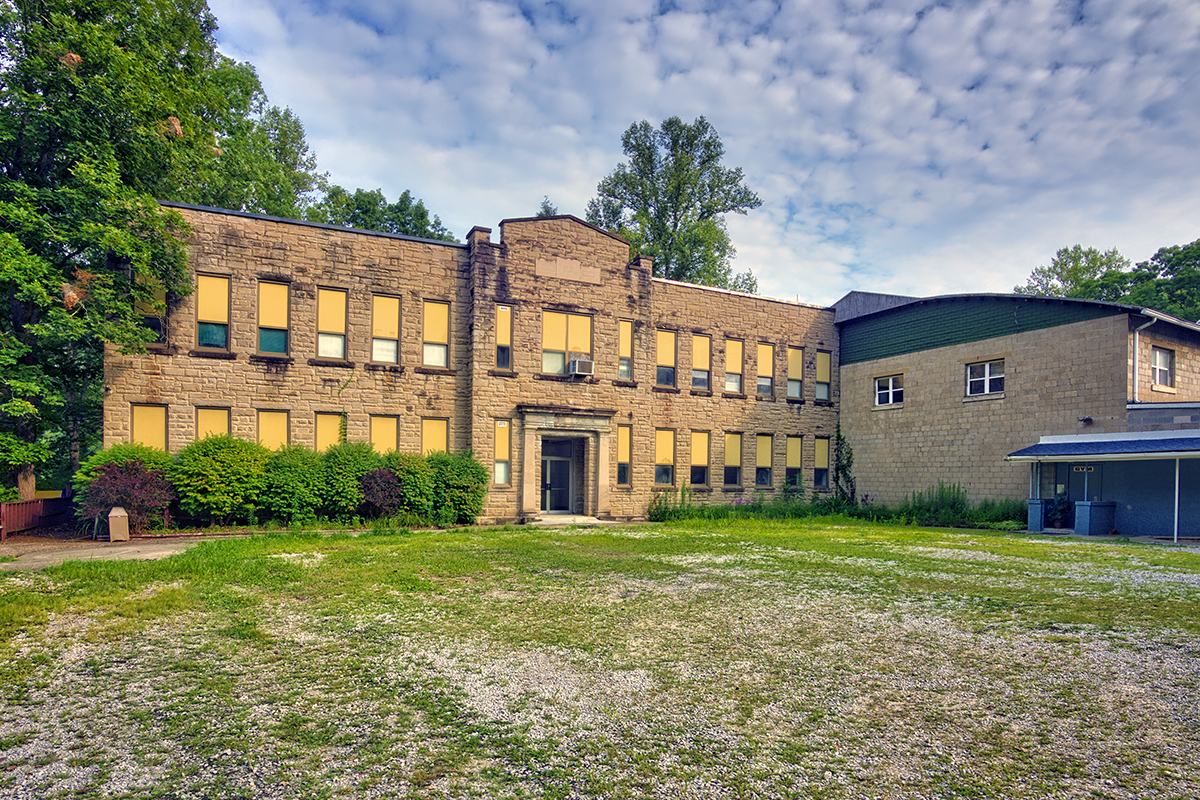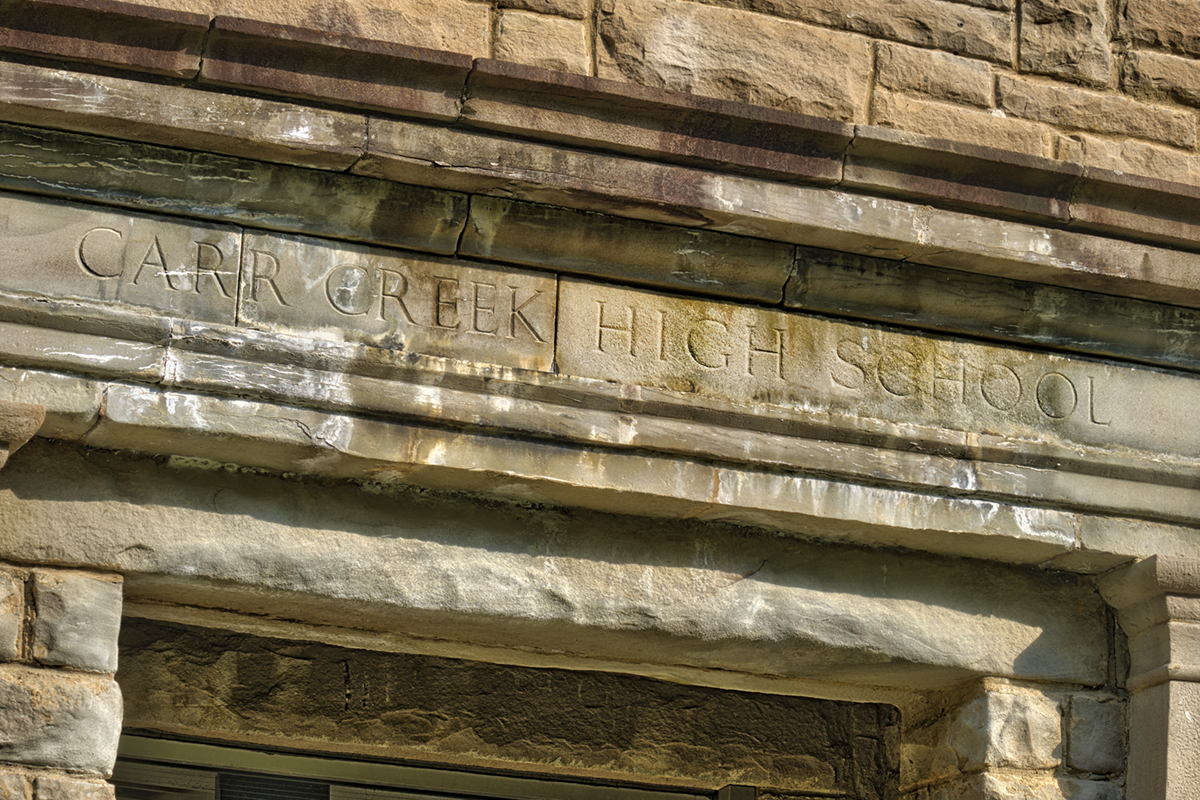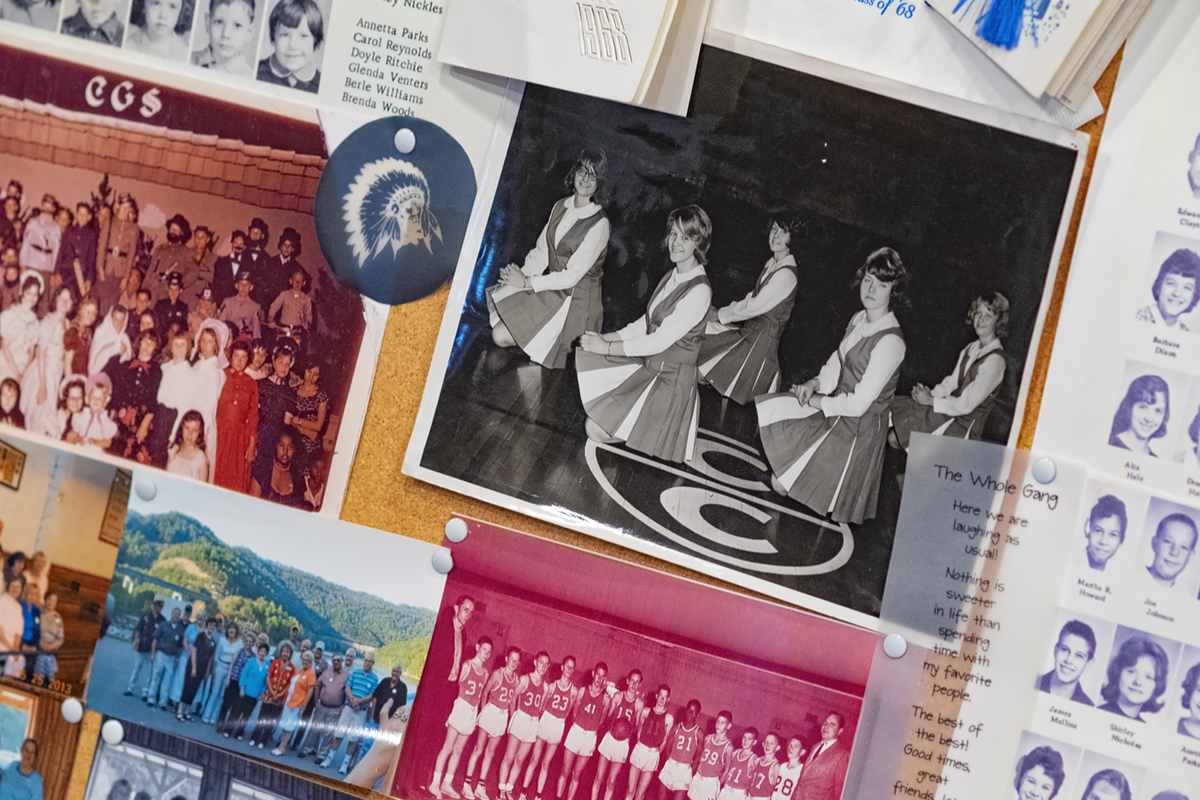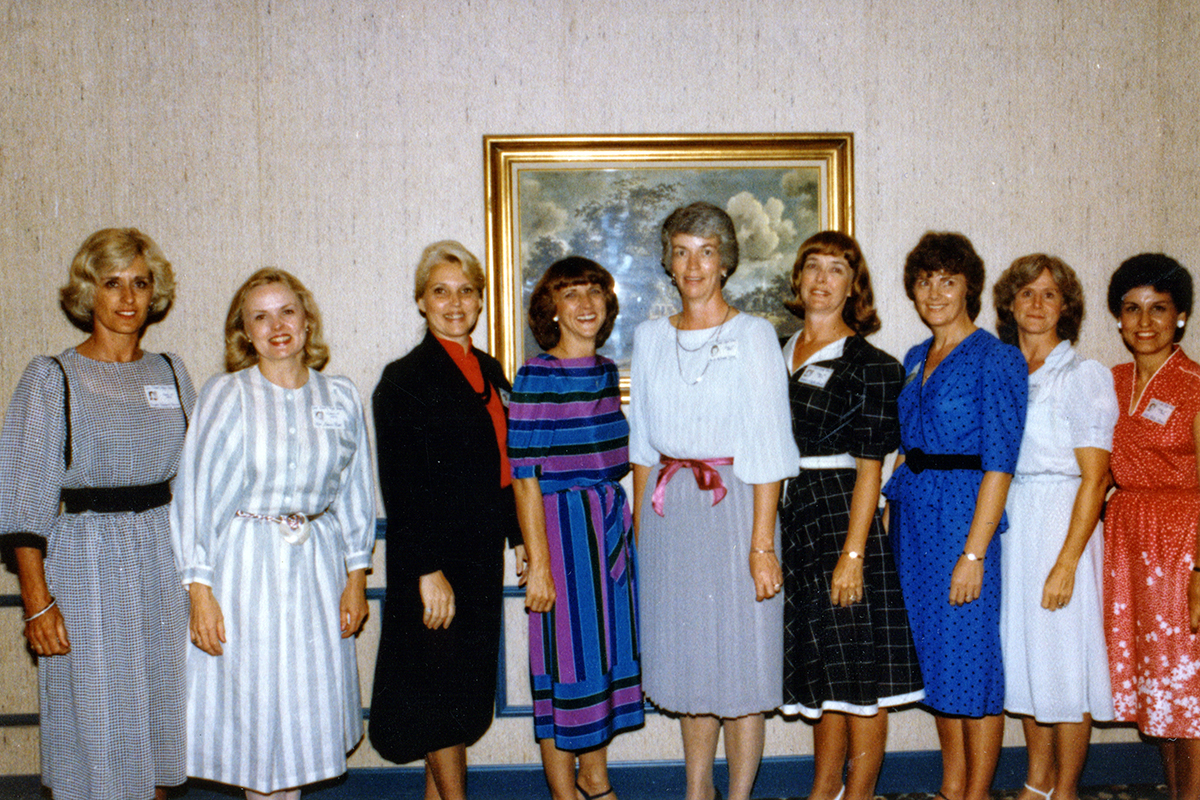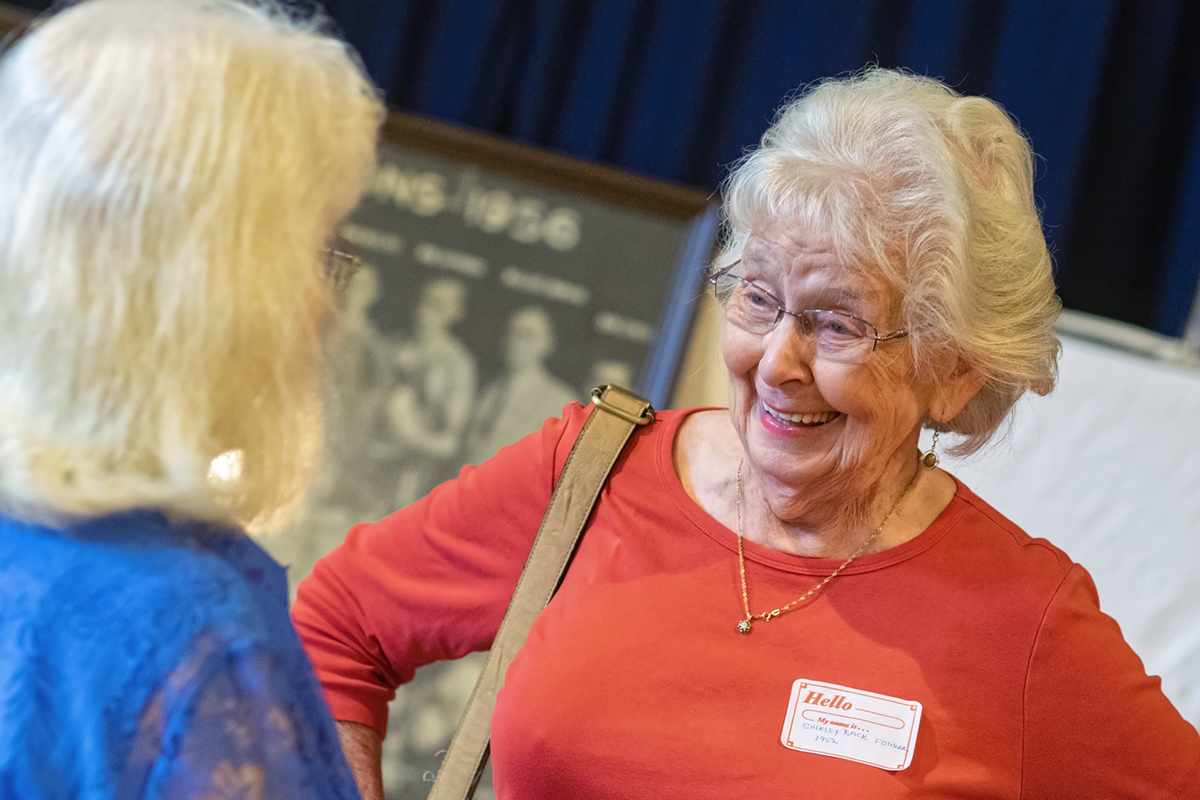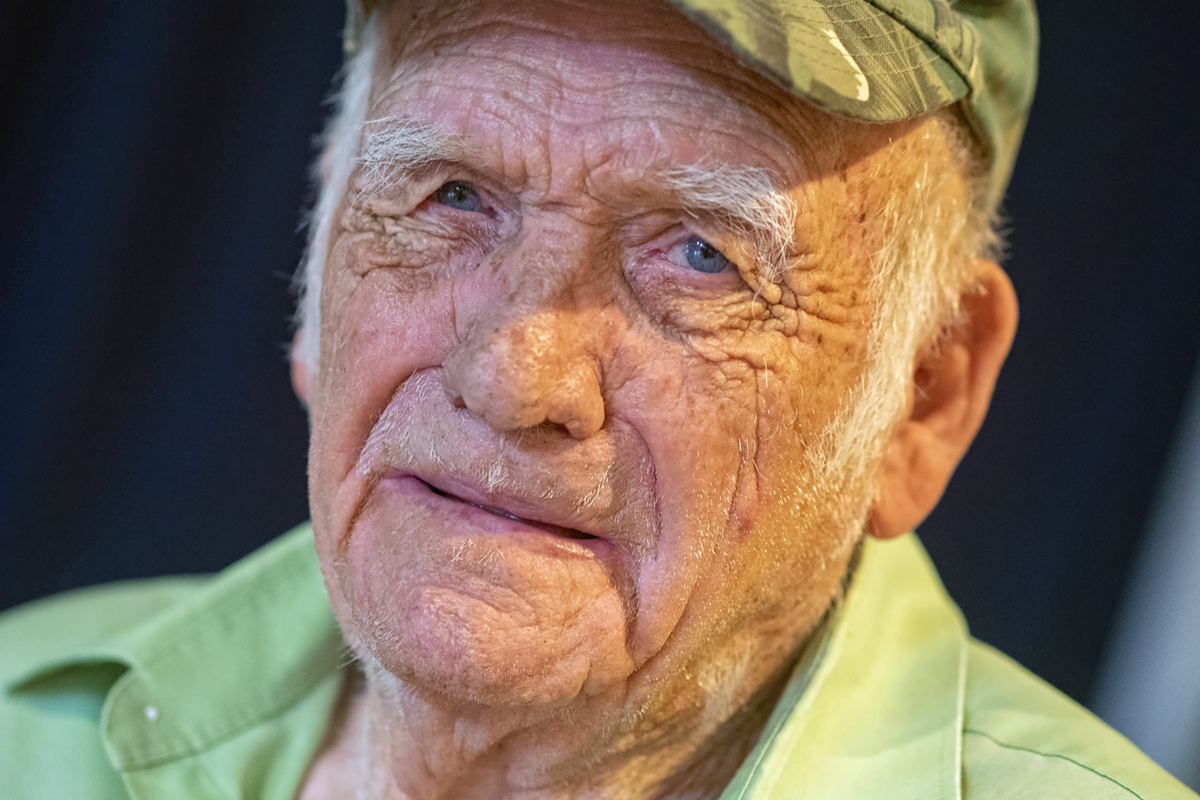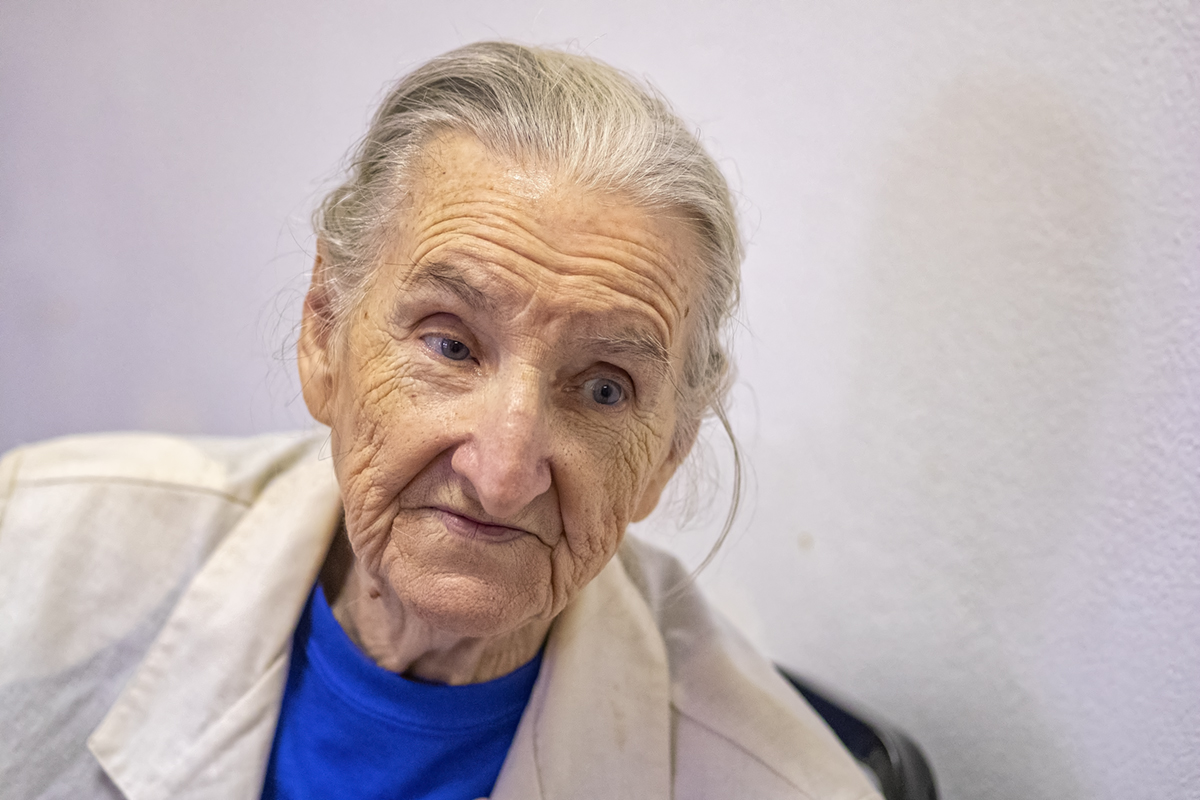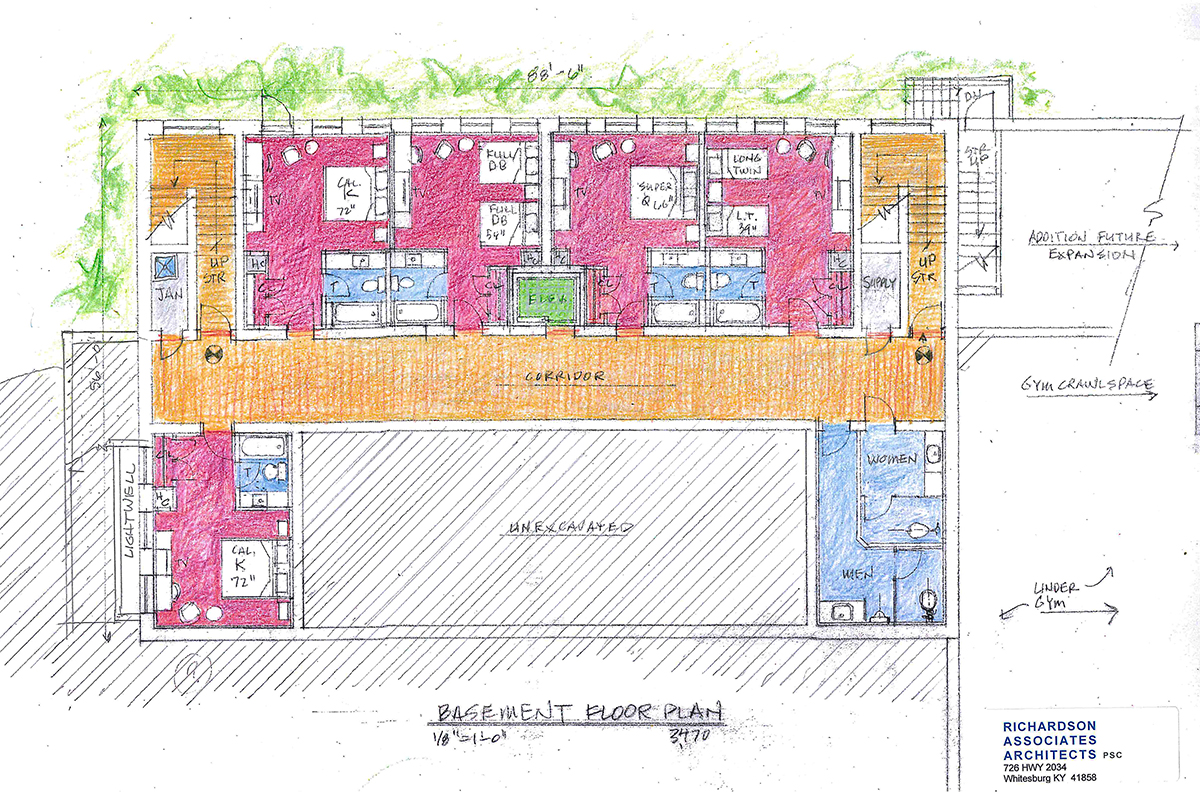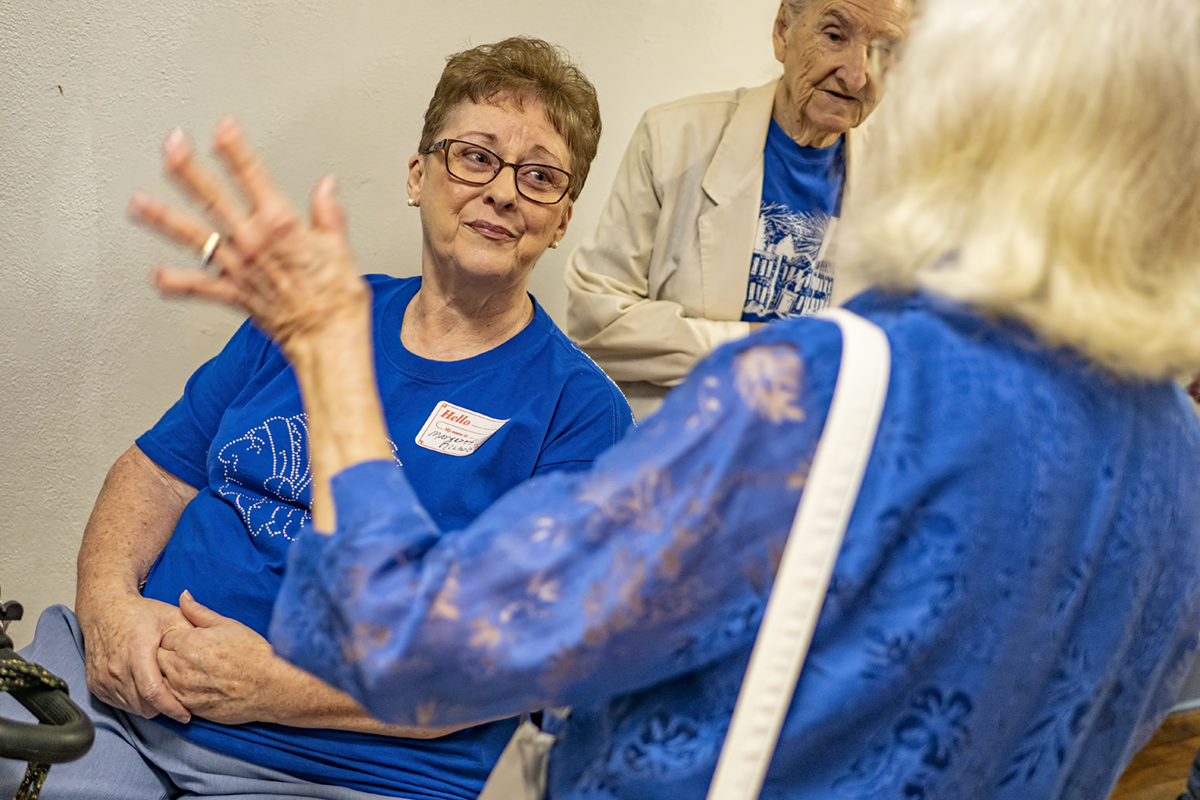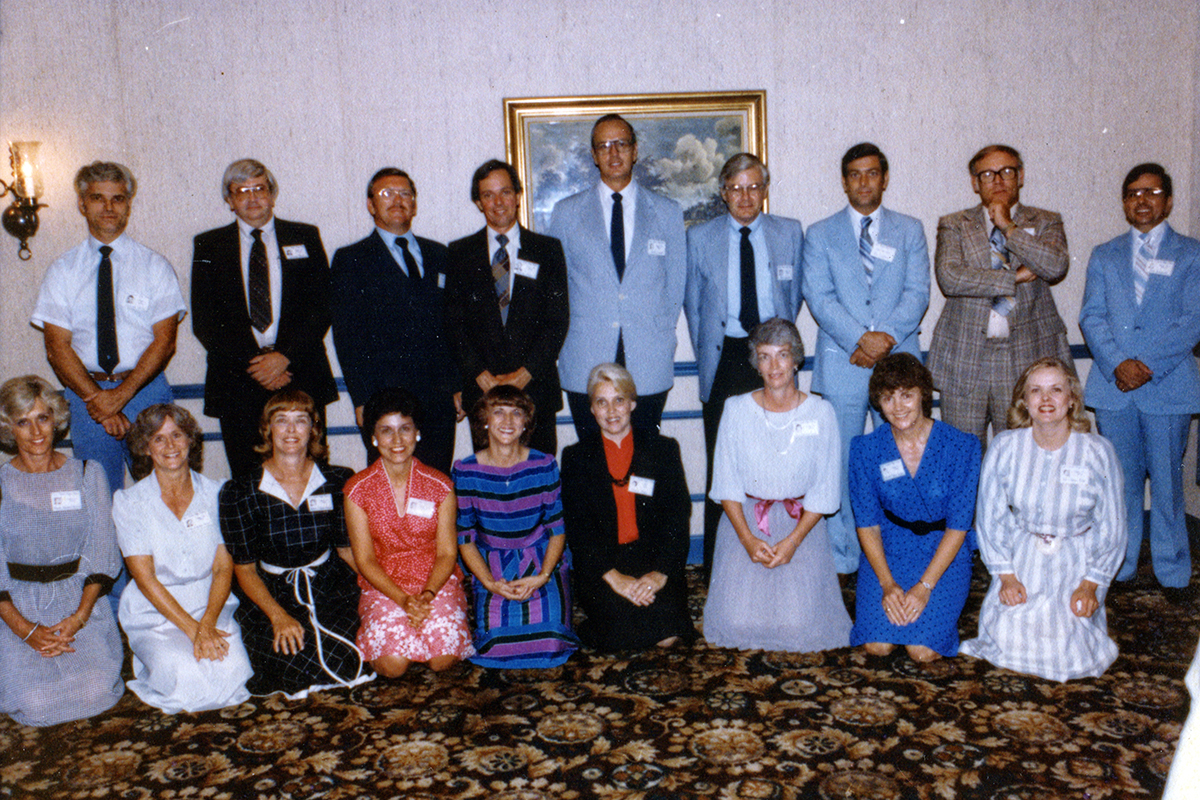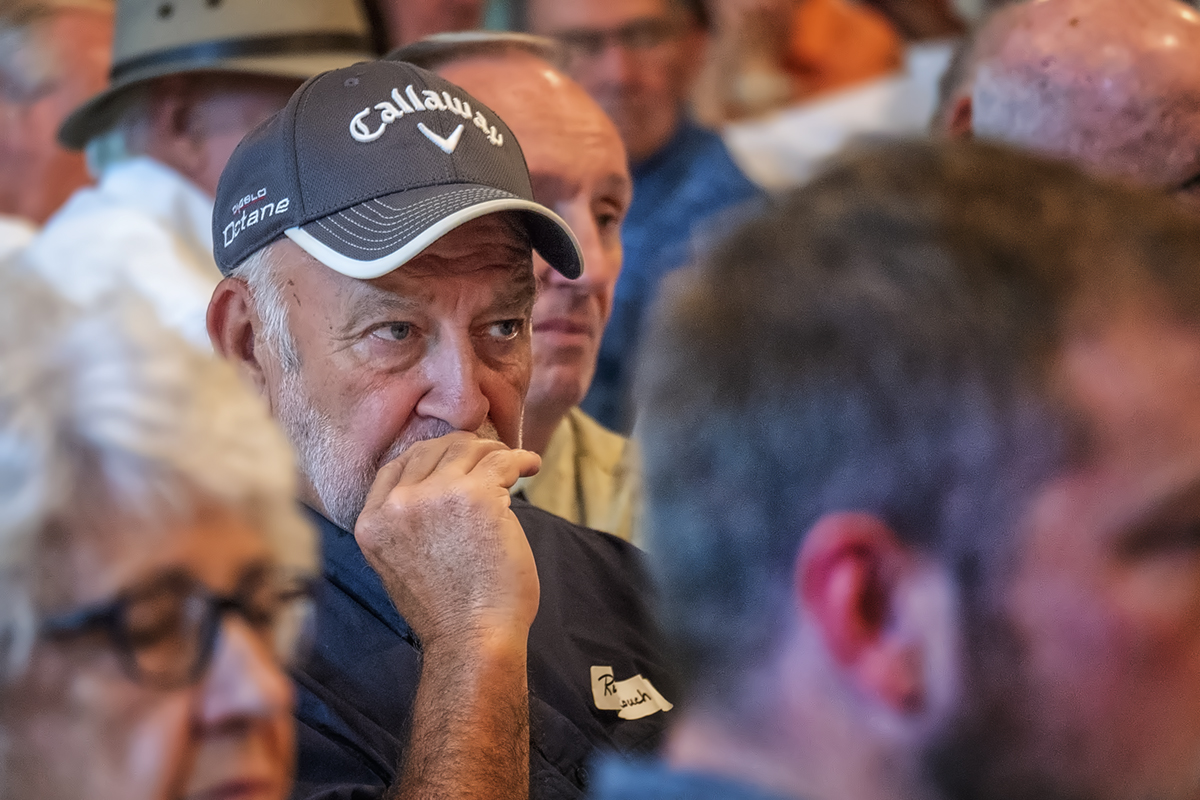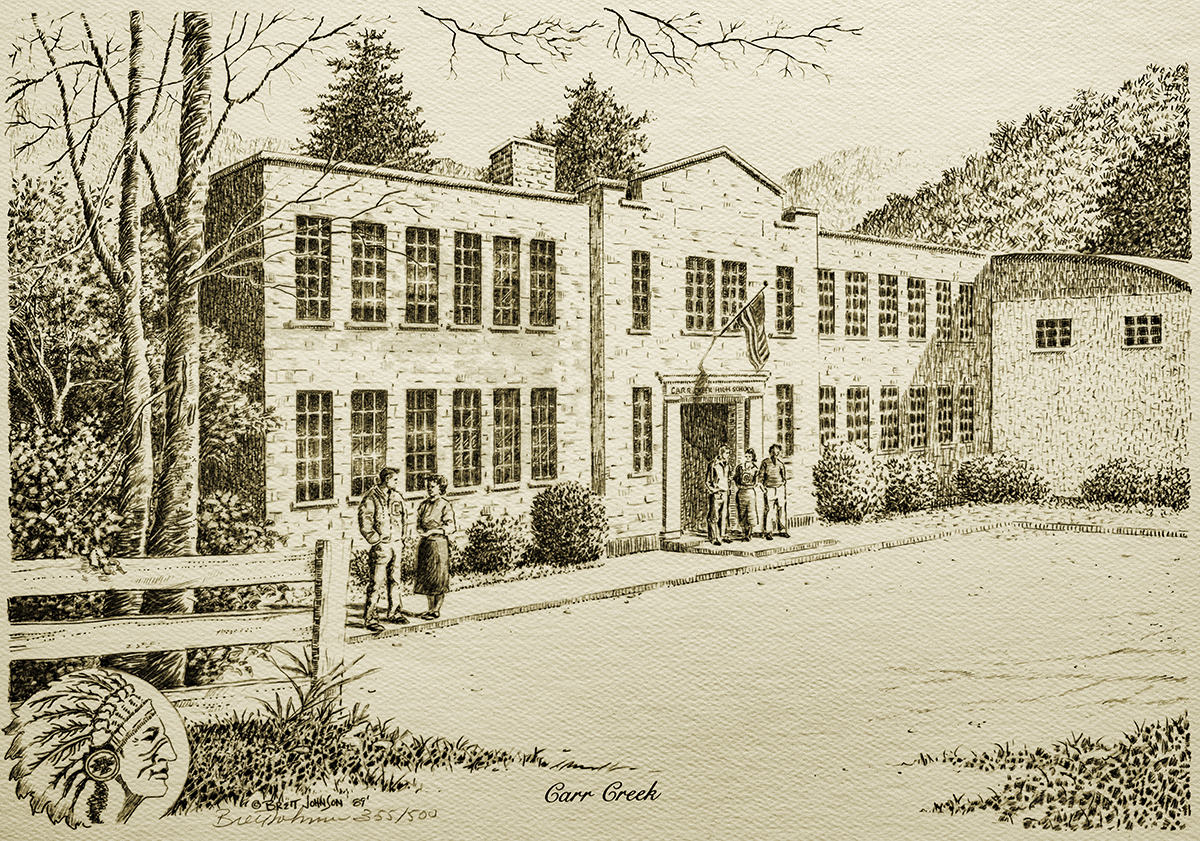Carr Creek Education
By Dessie Amburgey
This article was taken from “History and Families Knott County Kentucky” 1995
In 1919, the parents of the little community of Dirk, Kentucky in Knott County saw the need or a school for their children. They had been promised money to help build a school house, if they would give the land and build the framework.
They eagerly began to work. W. T. Francis and Simeon Francis donated the land. The other men in the community gave their labor. They chopped and felled trees, hauled the timbers and set up the framework, but the promised funds failed to come.
In spite of their disappointment, they did not give up. In 1920, Marion Francis road horseback to Caney to talk to two ladies and tell them of his needs. He had heard that Miss Olive V. Marsh and Ruth E. Weston had heard the needs of the mountain people and were interested in helping out. They both gladly answered his plea. Miss Weston as a teacher and Miss Marsh as a secretary.
A ninety-year old lady, Aunt Lucy, took them in, fed and sheltered them for a month, while the men of the community were building a little cottage for them. When the doors and windows failed to come. Aunt Lucy offered them the doors from her dad’s old log cabin. Other families donated windows, parts of windows, old pieces of screens and all of these were used. This was their reason for giving the cottage the name, Patchwork Cottage. The kindness and willingness of the mountain people, to make them a place to live, was such an inspiration for the two ladies, it made them happier than ever to help out.
Before the cottage was finished, Miss Weston began her primary teaching in an old store house. Hiram Taylor taught the older children in another room. This house had no windows nor desk. Their seats were rough planks laid on blocks of wood or nail kegs. While Miss Weston was teaching, Miss Marsh was writing letters by the thousands, trying to get money to finish the schoolhouse and equip it.
By November Patchwork Cottage was almost finished and Miss Weston moved her primary school into the living room. Here again the seats were planks resting on blocks. The light came from two windows, the other two were boarded up; one with planks; the other with a door. After Christmas, some of the older children had their turn of schooling in the living room of the cottage.
Slowly the work of the schoolhouse advanced. Miss Marsh kept sending out pleas for help. In May of 1922, the school building was practically finished, and these two ladies began to look forward and make plans for a real Community Center. They had been using the unfinished building for a free lending library, for various club meetings, community sales of second- hand clothing and social gatherings.
School was to begin in July. The county could only pay small salaries for two teachers for six months. Miss Weston and Miss Marsh began to raise funds to supplement this amount so they could have eight months of school and, if possible, hire another teacher. They were still living in the three little rooms of Patchwork Cottage and had taken in two little orphan boys. They needed more room and at least one additional helper.
By September of 1922, the county had extended the school months to seven, so with an additional $160 they could have an extra month. They were also promised an extra track of land for half price. They sent out another appeal for help. Luckily a gift was sent to put the finishing touches on the school house and for additional seats and desk.
Christmas this year (as the ones before and years after) was is the very happy one. Miss Weston, a cripple, rode her pony, Tinker Bell up and down Carr. Miss Marsh and most of the students followed after, stopped to sing Christmas carols at each home. The parents were so thrilled to hear their children singing.
In 1923, a governing board what setup. Miss Marsh and Miss Weston where the executives and five men of the community, selected by other people, formed the board. The school now had a six-room schoolhouse, a one room office and “The Singing Carr Home” (a dormitory for orphan girls). This home was opened in October to four orphan girls: Lon Hale of Does; Violet and Lola Combs of Littcarr; and Arnie Johnson of Dirk. Cora Johnson of Dirk stayed at the orphanage to help with the chores.
Lola, Lona and Cora started high school that year, since it was Carr Creek’s first year to teach high school. There were only twelve students: Raleigh Johnson, Ada Collins, Demis Francis and Carley Stamper from the community; Oscar and Lawrence Hale and Chester Back walked or rode horseback from Breedings Creek. The other two I can't remember. Carley, who was loved so dearly by both students and faculty, was playing basketball, he got too hot and took pneumonia and died on March 28th, 1925 -- a very sad loss for the Stamper family and to the Carr Creek classrooms. As always, the men of the community gave free labor.
In 1924, two two-room cottages were built, by the help of the parents, to house the high school students who lived outside the community. The students furnished their own food, bedding, and fuel. They went home on the weekends. The girls where supervised by a woman teacher, and the boys by the manual training teacher, Mr. Oscar Morgan - later by John Morgan.
The Singing Carr Home was a real home for orphan girls who would have had no chance, at that time, for an education. Due to the kindness and interest William Hale, my eighth-grade teacher, and Cullen Francis, I was taken in the dormitory at the end of 1923-24 school year. A $150 donated by kind and loving person from the “outside world” gave us a chance to grow into worthwhile citizens, not only for ourselves but for America.
In April 1925, there were sixteen in the little family at the orphanage, two children and six workers. During summer vacation, three girls and three boys stayed at the school. Miss Marsh and Miss Weston moved into Singing Carr Home with the three girls. Evelyn Pigman, Violet Combs and myself. The three boys slept at Lynnhurst Cottage. We stayed to keep things running and to get everything ready for the following year. The boys did the outside chores: took care of two cows, a pony and several chickens. They felled trees, sawed and split wood for winter and tended a small garden. The girls cooked, kept the building clean, did the laundry and did some canning.
By September 1925, and addition was made to Patchwork Cottage and the name was changed to Lynnhurst Cottage. Two more little orphan boys were taken in. One was on crutches, he had been hurt while working at a sawmill. He was so happy to have a home and he hopped about with such a sweet smile that he was called,” Our Little Tiny Tim. “
Each year the enrollment got larger as more orphans were taken in and interested parents built homes and moved into the community. The primary teacher, Mrs. Oscar Morgan, crowded 55 students into a room built for 32. She took it with a smile and did a wonderful job. Her husband, Oscar Morgan, came to teach manual training but also took on the job of eighth grade teacher and basketball coach. He and his wife were both wonderful people. The students went to them for advice. They watched over the orphans counseled them and took them under their wings.
In March 1927, Miss Marsh and Miss Weston severed their connections with Carr Creek and moved to California. Miss Marsh was needed to care for an elderly aunt and Miss Weston’s health was failing. Mr. W. T. Francis, one of the board members was elected as an executive for more than a year. He and Miss Margaret Humes took over the work and carried it on very successfully.
Miss Humes was from Jersey Shore, Pennsylvania. She had volunteered her work since 1923. She was a wonderful lady. Her wisdom and intelligence were insurmountable - her love for the mountains and the mountain children was so great it broke her heart when she had to leave. Her work was not only as an executive: she was a housekeeper, teacher and was always ready and willing to do any job that she was asked to do. She even used her own money to buy things for us if she saw we needed something. She was a great inspiration to all the Carr Creekers and was greatly admired by all. Words cannot express our gratitude for knowing such a wonderful person.
In November 1927, Berea College held an Extension School at Carr Creek, the first of its kind in the mountains. There were six of President William Hutchin’s staff who came for this experiment. We had lectures on agriculture, industry, religion and health care. We had community singing, storytelling and games for recreation. The weather was bad, but even so, we had an attendance for the ten sessions of 1,193. They came on foot and horseback from miles away. We had round table discussions and we learned from each other. We enjoyed it so much that the 1928 graduates gave up their senior trip to attend Berea’s Opportunity School.
In April 1927, the first class from Carr Creek Community High School graduated. There were only seven: Lone, Cora, Ada, Lawrence, Oscar, Raleigh and Chester. Demens and finished at mid-term.
In May 1927, a cloudburst came in Knott County and washing bridges, chickens, hogs, corn and gardens away. Everyone was facing starvation. Carr Creek Community Center came to the rescue by taking in more children and to clothe, feed and educate. The men in the community began to cut trees to build a boy’s dormitory, and as soon as it was finished, to start an addition to the girls’ dormitory.
That fall, the children did all the work. We were up at four o'clock preparing breakfast, feeding the animals and milking the cows. Each one had a definite task do at a certain time. The work was inspected and graded. There was an atmosphere of wholesome competition and the winning team was allowed some special privilege. By this efficient management, plenty of time was left for study and recreation. The work was hard, but everyone had fun.
In 1928, our basketball team won fame throughout the country by taking part in the state and national tournaments. The boys had been trained in their younger days by the little cripple lady, Ruth E Weston, and later during their high school days by volunteer coach, Oscar Morgan. He was such a good person, so quiet and understanding. He gave so unselfishly of his time, ingenuity and many times his finances to keep the boys going. He had a hard time keeping basketballs. Most of the time the balls were cheap or hand-me-down balls and the boys had no uniforms, but this did not stop them. Miss June Ranney, a teacher Greenville, Michigan, heard Mr. Morgan talking about needing a good basketball, so she gave him her first month salary to buy a ball. She really meant it for a loan, but Mr. Morgan didn't understand, and she didn't have the heart to tell him. When the boys won their fame and put Carr Creek on the map she was glad to have a small part in helping out.
Later W. T. Frances say this in an address at the International Bible Conference and Winona Lake, Indiana “Last spring, our boys of the Carr Creek High School won fame throughout the United States by their skill in basketball. Mountain lads trained by volunteer coach, himself a mountain man. They started out with nothing, their improvised court was only half the size of a regulation gymnasium floor and the homemade baskets six inches lower than prescribed by rule; yet they battled their way through three tournaments in the state and were awarded the Kentucky YMCA silver loving cup for the best sportsmanship in the state. They lost the state championship to Ashland only after four overtime periods.”
“In the last forty seconds Ashland made a basket which decided the game. Kentuckians, with pride and enthusiasm, raised the money to send the Carr Creek team to Chicago for the national tournament. In Chicago, they swept three nationally known teams from the floor, and of the 40 teams entered where the thirty-sixth team to be eliminated. In this season's tournament they played eighteen straight games and never used to substitute or called a timeout. They have given to Kentucky and the world a new inspiration in the game of basketball. They were equipped for the game of life with the same determination and clean living. Given a chance our mountain lads can and will make good.

